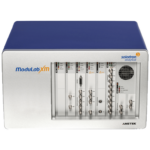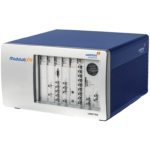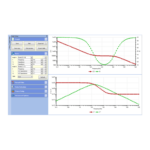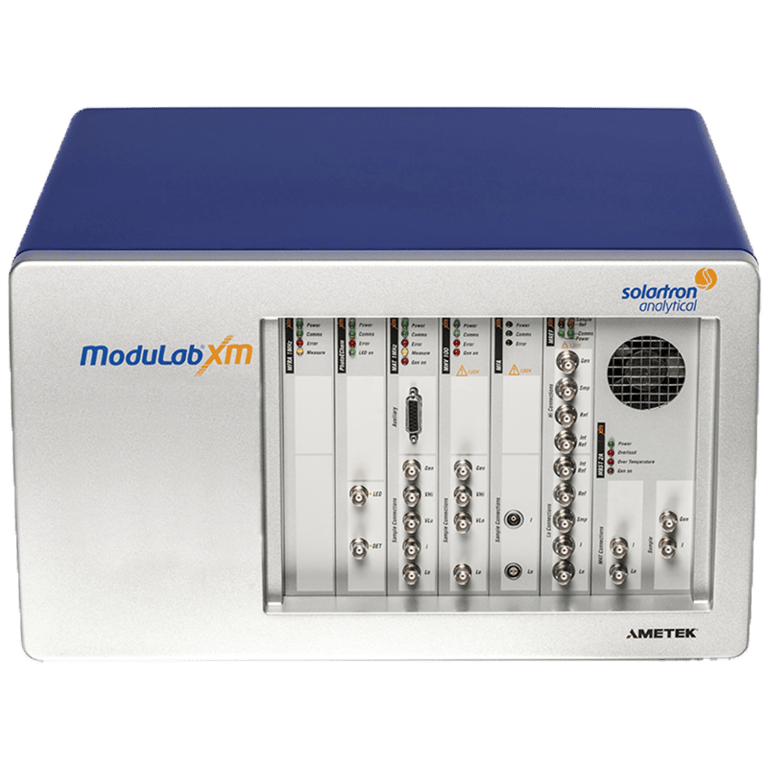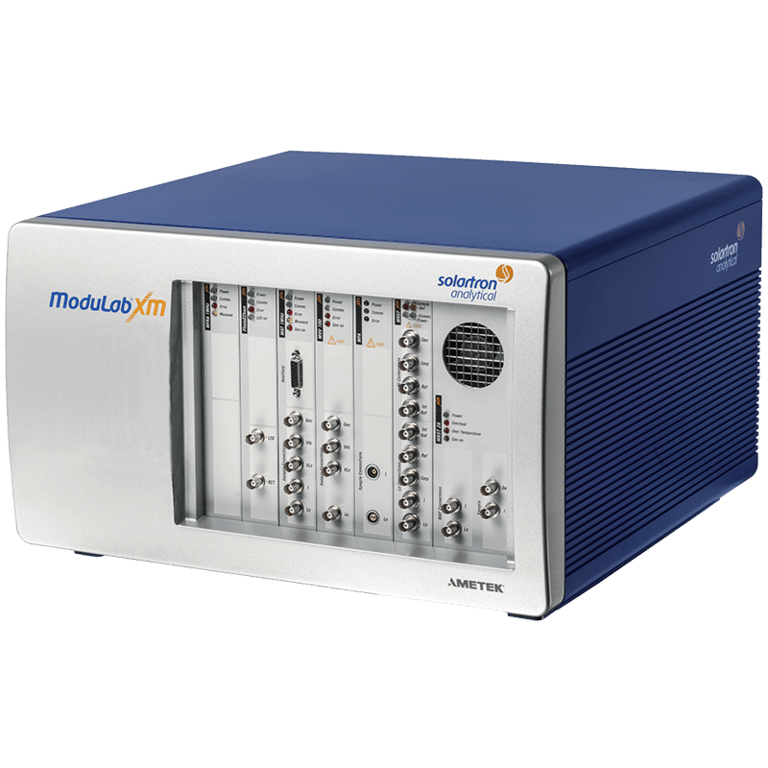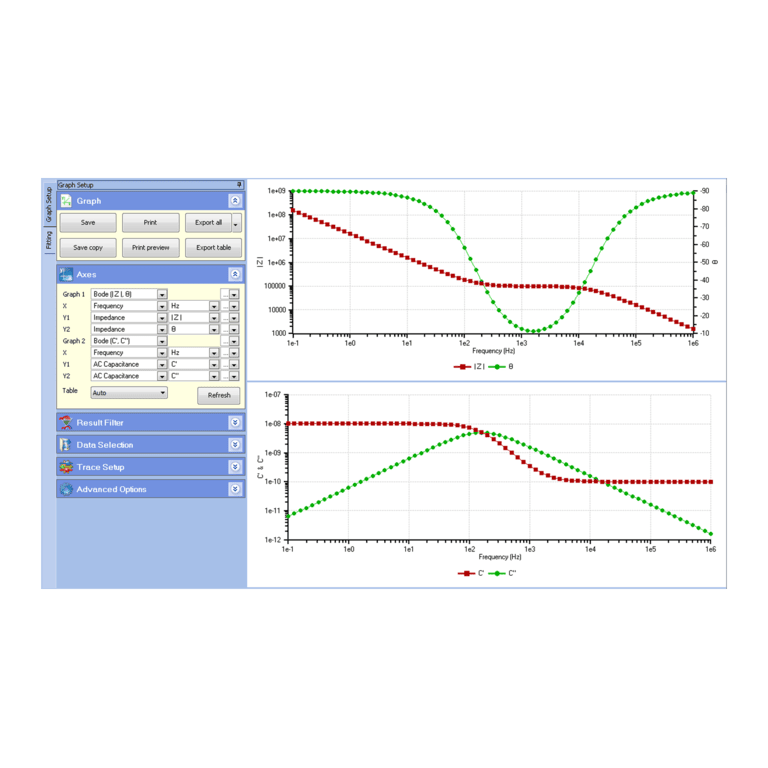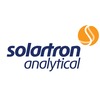ModuLab XM ECS Potentiostat
The ModuLab XM ECS by Solartron Analytical is a high-precision modular potentiostat/galvanostat for advanced electrochemical research. It supports ultra-low current measurements, wide-frequency EIS, and flexible configuration for diverse applications. XM-Studio software provides powerful control and data analysis tools.

ModuLab XM ECS: the Xtreme Measurement electrochemical test system
☑️Can be tailored for your different range of electrochemical experiments through boosters and option interfaces.
☑️Can be expanded even beyond traditional electrochemistry, including materials and photovoltaic measurements.
☑️Exclusive Femto module for low current measurements.
☑️XM-Studio software is included with all XM Series systems.
☑️ModuLab XM ECS impedance accuracy contour plot highlights Solartron’s best-in-class measurement performance.
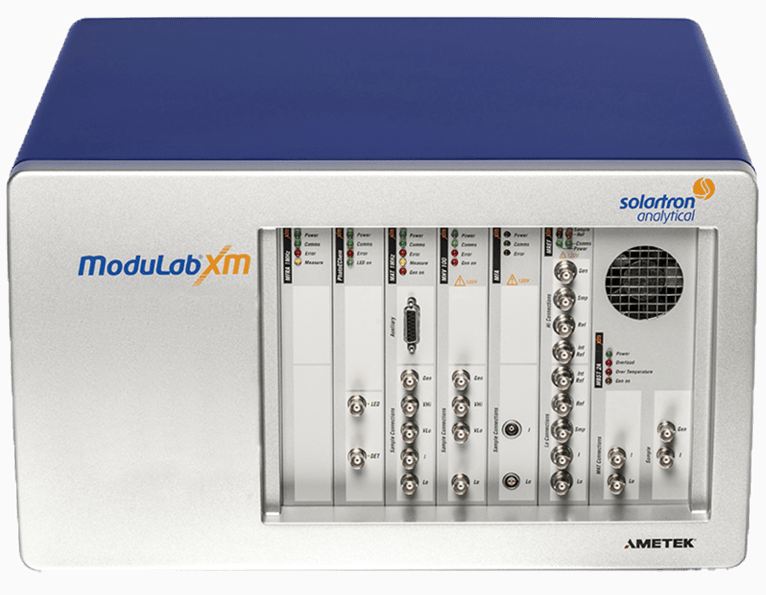
What is unique about ModuLab XM ECS?
ModuLab XM has modularity at the center of its design. Each system can be configured for electrochemical, materials, and photoelectrochemistry measurements. At the core of each of these is the Frequency Response Analyzer. The accuracy from design to calibration is at the heart of Solartron’s success and reputation for impedance measurements.
Fast ADCs (40 MHz) allow specialized techniques, such as Harmonic Analysis and Intermodulation at high sample rate to be performed at all frequencies; unlike sub-sampling techniques using slower ADCs common to other designs that are subject to aliasing errors. Harmonic Analysis is typically used to investigate cell non-linearity with application in fast charge/discharge of energy devices.
How does energy research benefit from this XM?
Standard features and available options such as high current boosters on ModuLab open the door to applications that other systems cannot achieve, such as ultra-low, micro-ohm impedance cells (latest generation batteries and fuel cells, for example). Additional voltage measurements allow simultaneous impedance measurements of the anode and cathode of a single cell, while high polarization voltage and high compliance voltage options enable measurements across stacks of energy devices.
How is the Frequency Response Analyzer (FRA) used in Electrochemical Impedance Spectroscopy (EIS)?
The FRA interacts with the potentiostat, electrochemical cell, and electrolyte solution to form an EIS instrumentation system. In EIS measurements, the signal is an AC sine wave on a DC background that is applied over a range of frequency. EIS data compares the applied signal to the measured response, and the result is the impedance magnitude and phase shift. These give rise to the real and imaginary portions of the impedance.
The most common representation of impedance data is the Nyquist Plot, sometimes called complex impedance plot. The Nyquist Plot represents the real impedance on the X-axis and the imaginary component of the impedance on the Y-axis.

Different processes are represented as components in an equivalent circuit constructed of a number of circuit elements. This is based on their respective relationship with frequency. The Double Layer Capacitance is represented as a capacitor because the impedance varies inversely with frequency and is all imaginary impedance. The Solution Resistance and Charge Transfer Resistance are represented as resistors because their impedance is independent of frequency and is all real impedance. The core building block of most equivalent circuits is the Randles cell, as it has these three key components: Double Layer Capacitance (electrical double layer), Solution Resistance, and Charge Transfer Resistance. Other components representing inductance and diffusion can be added to this to represent an appropriate circuit model for your test cell.
Impedance data aid in determination of State of Health (SoH) or State of Charge (SoC) for Li-ion batteries, corrosion resistance, or analyte concentration with impedance-based sensors. EIS is the fastest growing technique in both applied and research electrochemistry.
Applications and Software
EnergyLab XM is an application-specific XM instrument designed for research of batteries, fuel cells, and supercapacitors. EnergyLab XM’s extreme sensitivity is used for advanced testing of lithium-ion batteries and alkaline batteries. This includes research in half-cell configurations and next generation low impedance cells in the sub 100 μΩ range, as well as popular battery types such as 2032 coin cell testing and 18650 cell testing.
EnergyLab XM includes a reference grade potentiostat/galvanostat, frequency response analyzer (FRA), auxiliary voltage channels, and 2A booster. These features provide accuracy to the most common tests for impedance and battery capacity (charge/discharge) to measure rated capacity (mA h) or energy (watt hours) that a battery can deliver.
High current may be needed for battery testing, to either fully charge or discharge the battery cell at high discharge rate or to measure low impedance. External power boosters up to 100 A can be connected to the EnergyLab XM. Our boosters are automatically controlled for fully integrated tests.
All modes — potentiostat, galvanostat, boosted and non-boosted — make use of Solartron Analytical’s unique auxiliary channel capability. These auxiliary channels can measure nominal voltage across the battery terminals of a single cell in a stack or at the cell level across the anodes, cathodes, and separators. Simultaneous coordinated measurements of DC and impedance can help identify the mode of battery failure and predict battery life.
EnergyLab XM’s impedance accuracy contour plot highlights Solartron’s best-in-class measurement performance.
IDEAL FOR
✔️ Battery and supercapacitor research
✔️ Fuel cells and electrolysis studies
✔️ Corrosion analysis
✔️ Coatings and surface treatments
✔️ Sensor development
✔️ Photovoltaic and photoelectrochemical testing
✔️ Fundamental electrochemical studies

